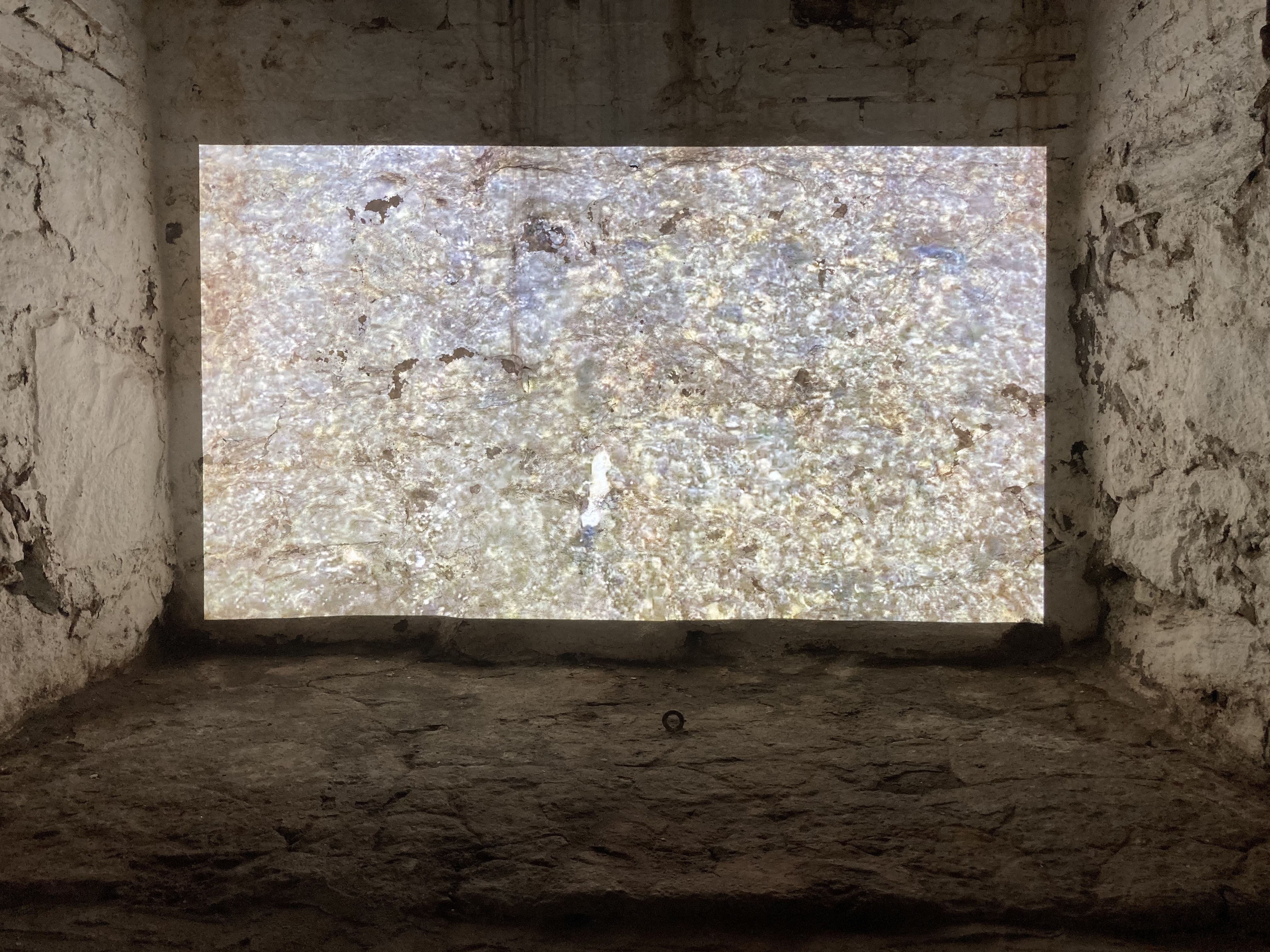The first is taken from nature; the second, which may precede, follow, or be woven into the first, is a kind of meditative complement to the nature image. Tanka produce a certain dreamlike effect, presenting images of reality…the image proceeded directly from the mind of the dreamer. The tanka poet may be likened to a person holding two mirrors in his hands, one reflecting a scene from nature, the other reflecting himself as he holds the first mirror.
Inspiration for Tanka is rooted in this passage, compiling clips that show the historic Kamogawa River from different seasons and locations in Kyoto. Cut to patterns of 5-7-5-7-7 seconds, the video reimagines the counts to which a tanka poet may utter a poem inside their head. There are two rivers shown, a river that the camera captures and a river that a mirror captures, alluding to the metaphorical mirror in the passage.
Projected against the walls of the Chute Projects space, the video acts as a window into my physical and mental headspace distant from New York, the city I associate with my American identity.




